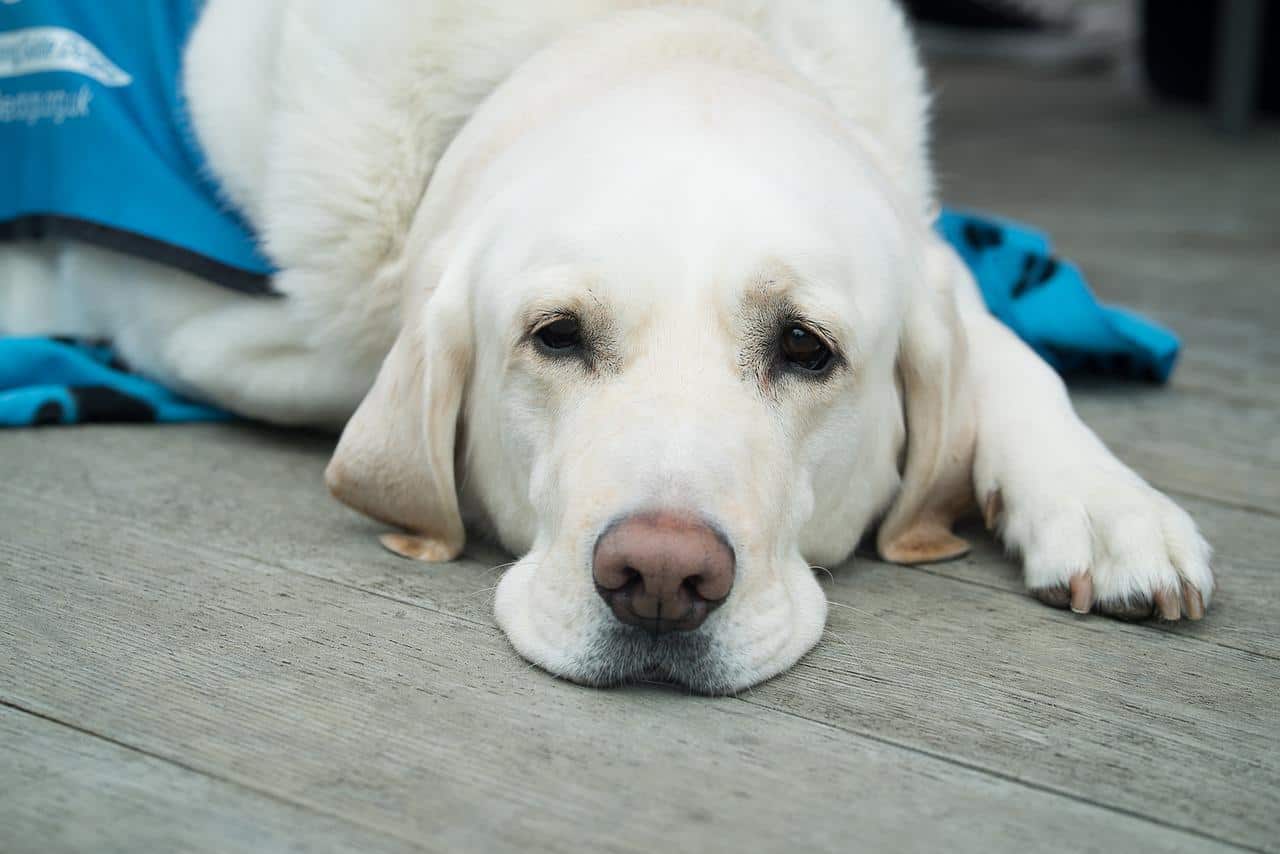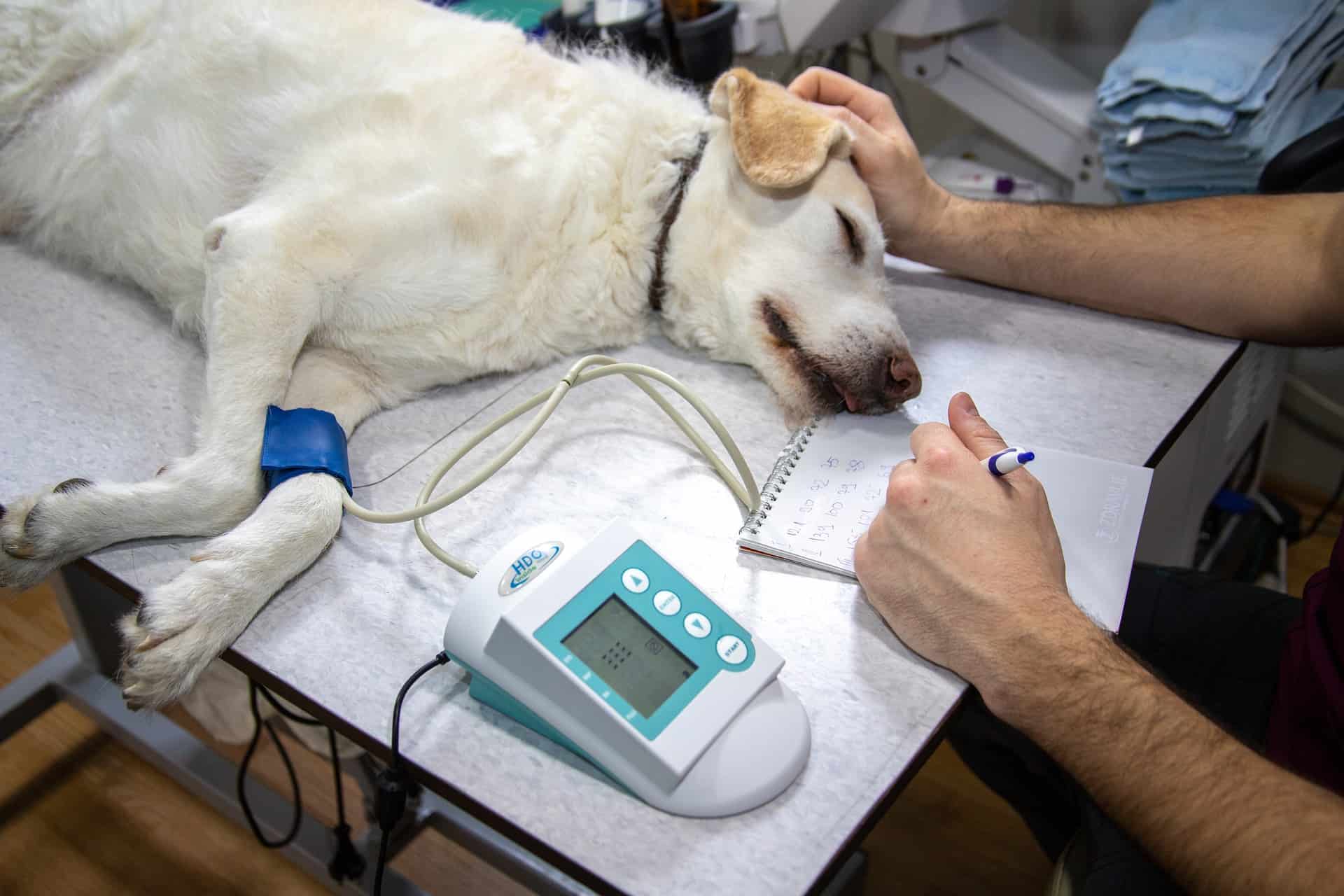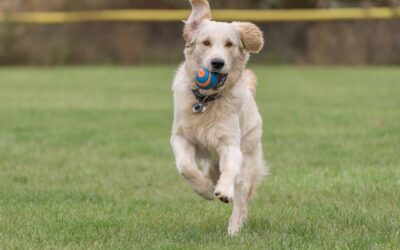A Complete Care Guide On How To Treat A Sprain On A Dog

Updated on October 13, 2025
When your beloved canine companion experiences a sprained leg, ankle, or paw, it can be distressing. Understanding the nature of these injuries is crucial in providing the appropriate care and support for your furry friend’s recovery. A sprain occurs when the ligaments that connect bones and stabilize joints are stretched or torn due to excessive force or overextension. Strain, however, refers to the stretching or tearing of muscles or tendons. These injuries can range from mild to severe, and knowing the causes, types, and treatment approaches for dog sprains is essential for your pet’s well-being.
Symptoms of Sprains and Strains in Dogs
As Veterinarian Melissa Boldan, DVM stated in the PetMD article:
“If your dog has a soft tissue injury, they may show the following signs:
-
Lameness (not putting full weight on a leg)
-
Difficulty getting up from sitting or slow to sit down from standing
-
Decreased activity
-
Heat at the injury site
-
Swelling
-
Trouble jumping or avoiding stairs
-
Decreased playing
-
Stiffness
-
Vocalizing (whining, acting like they’re in pain).”
Causes of Dog Sprains
Dog sprains can occur due to various reasons, including sudden movements, strenuous activities, falls, or accidents. Common causes of sprains in dogs include:
- Sudden Movements: Dogs are naturally active and agile creatures. Abrupt changes in direction or speed during play, exercise, or even everyday movement can lead to sprains.
- Strenuous Activities: Engaging in high-intensity exercises, such as jumping, running, or agility training, can put excessive strain on your dog’s joints and ligaments, making them more prone to sprains.
- Falls or Accidents: Dogs can be curious and adventurous, occasionally resulting in falls or accidents that can cause sprains. Uneven surfaces, slippery floors, or collisions with objects or other animals can lead to sprained legs, ankles, or paws.
Strains vs. Sprains
Understanding whether your dog has a strain or a sprain can help guide treatment.
- Strains affect muscles or tendons (which connect muscles to bones). Your dog might show stiffness, limping, or a reluctance to use the limb.
- Sprains impact the ligaments that connect bones and keep joints stable. Swelling, tenderness, or difficulty putting weight on the limb can be signs.
Everyday Situations That Can Lead to Injury
It doesn’t always take a high-speed chase to cause a sprain or strain. Something as simple as missing a step on the stairs or jumping off furniture awkwardly can do the trick. Athletic and high-energy dogs are particularly prone to these injuries, especially if they’re constantly running, turning sharply, or competing in agility sports.
One muscle area that’s commonly affected is the iliopsoas, which plays a major role in movement and stability. Dogs can strain this muscle group by slipping, stretching too far, or going “splay-legged” while running.
A Common Site for Injury: The Cranial Cruciate Ligament (CCL)
A very common spot for sprains is the cranial cruciate ligament (CCL), which is similar to the ACL in humans. This ligament helps stabilize the knee, and unfortunately, it’s vulnerable, especially in larger breeds.
Some dogs have a steeper angle in their knee joint due to their genetics, which puts extra strain on the CCL. A sudden twist, landing while turning, or even stepping into a hole while running, can lead to a partial or full tear.
Understanding Ligaments and Their Role in Dog Mobility
Ligaments are strong, elastic tissues that keep your dog’s joints stable. When these ligaments are overstretched or torn, your dog might feel discomfort or instability. The severity of the sprain can vary; sometimes it’s just a stretch, and other times there might be a partial or complete tear.
Understanding the importance of ligaments helps us see why rest and care are crucial after a sprain.
Common Types of Dog Sprains
- Leg Sprains: These often happen when a dog twists a limb during play or running. Symptoms can include swelling and favoring one leg.
- Paw Sprains: Walking on uneven ground or stepping on something sharp can lead to a sore paw. You might notice your dog limping or licking the area.
- Hip Sprains: Trauma or overuse can lead to a hip sprain, which may cause your dog to struggle getting up or show stiffness.
- Ankle Sprains in Puppies: Because puppies are still growing, their joints are more fragile. Quick movements or awkward landings can cause ankle sprains, making walking difficult.
Caring for Sprains in Puppies
Puppies require extra attention, especially when dealing with sprains. Since their bones and joints are still developing, even a mild injury can have long-term effects if not treated properly. If you notice signs of a sprain, reach out to your vet right away.
With proper care and rest, most puppies recover well and get right back to their usual playful selves.
How Veterinarians Diagnose Sprains and Strains
If your dog is limping, hesitant to put weight on a leg, or just not moving like their usual self, a visit to the vet is the best next step. Your vet will start by examining your dog’s movement and gently checking each joint and limb for signs of swelling, heat, or pain.
In cases where a torn CCL is suspected, your vet may perform something called the cranial drawer test, which helps check for unusual movement in the knee joint—a telltale sign of ligament damage.
The Role of X-rays and Advanced Imaging
X-ray imaging allows veterinarians to visualize the bones, joints, and ligaments, enabling them to assess the extent of the injury accurately.
While soft tissues like ligaments and tendons don’t show up clearly on X-rays, these images help rule out other conditions like fractures, arthritis, hip or elbow dysplasia, bone infections, or even cancer. They can also reveal how the joint has responded to the injury, for example, the formation of bone spurs that may develop after a CCL tear.
For more complex cases, especially in athletic dogs or when a precise diagnosis is needed, your vet may suggest advanced imaging like ultrasound, CT, or MRI. If this is the case, you might be referred to a veterinary orthopedic specialist.
Surgery as a Treatment Option for Severe Sprains
Surgery may be necessary in severe cases to repair the damaged ligaments and restore joint stability. This is usually considered when conservative treatment approaches have failed or when there is a significant ligament tear. Surgical intervention may involve ligament reconstruction or stabilization procedures. It is important to consult with a veterinary orthopedic specialist to determine the most appropriate treatment option for your dog’s specific condition.
The Significance of Paw Care in Preventing Sprains
Proper paw care is essential in preventing sprains and other injuries in dogs. Regularly trimming your dog’s nails can prevent them from getting caught or snagged, reducing the risk of sprains. It is also important to keep the paw pads moisturized and free from cracks or dryness, as this can make them more susceptible to injuries. Additionally, providing a safe and controlled environment for your dog’s activities, such as avoiding excessive jumping or running on hard surfaces, can help minimize the risk of paw sprains.
How Can Pet Insurance Help You?
Pet insurance can be a valuable tool in managing the costs of treating a dog sprain and other veterinary expenses. By having a pet insurance policy in place, you can have peace of mind knowing that you can provide medical care for your furry companion without worrying about the financial burden. Pet insurance can help cover the costs of veterinary consultations, diagnostic tests, medications, and even specialized treatments if required.
Reimbursement
This method is the most common for pet insurance companies. You pay out of pocket for the veterinarian bill, and then the insurance company reimburses you for what’s covered under the insurance plan. The steps look like this.
- You pay the vet bill after your dog’s visit.
- You fill out the pet insurance claim form.
- Submit the claim form and other required documentation to the insurer.
- After the claim is approved, you will be reimbursed for eligible expenses.
What Does Odie Pet Insurance Cover?
Pet insurance covers various veterinary expenses, providing financial protection and peace of mind for pet owners. Here are the details of the coverage options offered by Odie PetInsurance:
Illness & Injury Plan
The Illness & Injury Plan is an all-inclusive insurance plan designed to cover a wide range of medical needs for your pet. This plan includes comprehensive coverage for various illnesses, injuries, and veterinary services. Some of the covered items include:
- Veterinary exams and consultations
- Diagnostics (e.g., X-rays, lab tests)
- Prescribed medications
- Surgeries and hospitalization
- Rehabilitation, acupuncture, or chiropractic treatments
- Medically necessary supplies
- Euthanasia and cremation
The Wellness Plan
The Wellness Plan is a monthly membership that focuses on preventive care and covers routine veterinary services.
- Provides reimbursements for routine care items, including wellness visits (exams and vaccines), testing and parasite prevention, dental cleanings and at-home dental care, vitamins, supplements, and more.
- Through Odie’s partnership with Petivity, a leader in smart pet products and proactive care, Wellness Plan members can also receive reimbursements for Petivity devices and health kits, as well as eligible Purina food and supplements.
- Total reimbursement up to $700 per year.
FAQs
What is a dog sprain, and what causes it?
A sprain occurs when ligaments connecting bones and stabilizing joints are stretched or torn. Causes include sudden movements during play, strenuous activities, falls, repeated jumping, walking on uneven ground, or stepping on sharp objects. Different from strains, which affect muscles or tendons.
What are the symptoms of a sprain in dogs?
Common signs include limping (usually first), swelling, favoring one leg, difficulty getting up, stiffness, licking the injured area, and reluctance to bear weight. Seek vet care if lameness persists over 24 hours, the leg feels hot, or your dog is in severe pain.
Which dogs are most prone to sprains?
Overweight dogs, very active dogs that frequently jump, and puppies (due to developing joints) are most susceptible. Common sprain types include leg, paw, hip, and ankle sprains.
How do I treat a dog sprain, and how long does healing take?
Most sprains heal in approximately six weeks. Treatment includes rest and restricted activity (most crucial), vet-prescribed anti-inflammatory medications, cold packs, and weight loss if needed. Severe cases may require surgery. Crate rest may be necessary to prevent re-injury.
Can I prevent sprains in my dog?
Maintain a healthy weight, avoid excessive jumping and high-impact activities, provide a warm-up before intense exercise, be cautious on uneven terrain, and monitor puppies during play. Untreated sprains can lead to muscle atrophy and strain other limbs.
Does pet insurance cover sprain treatment?
Yes, pet insurance covers sprains as accidents/injuries, including veterinary consultations, diagnostic tests (X-rays, MRI), medications, surgery if required, and emergency care. Always have your vet evaluate suspected sprains for proper diagnosis and treatment.




